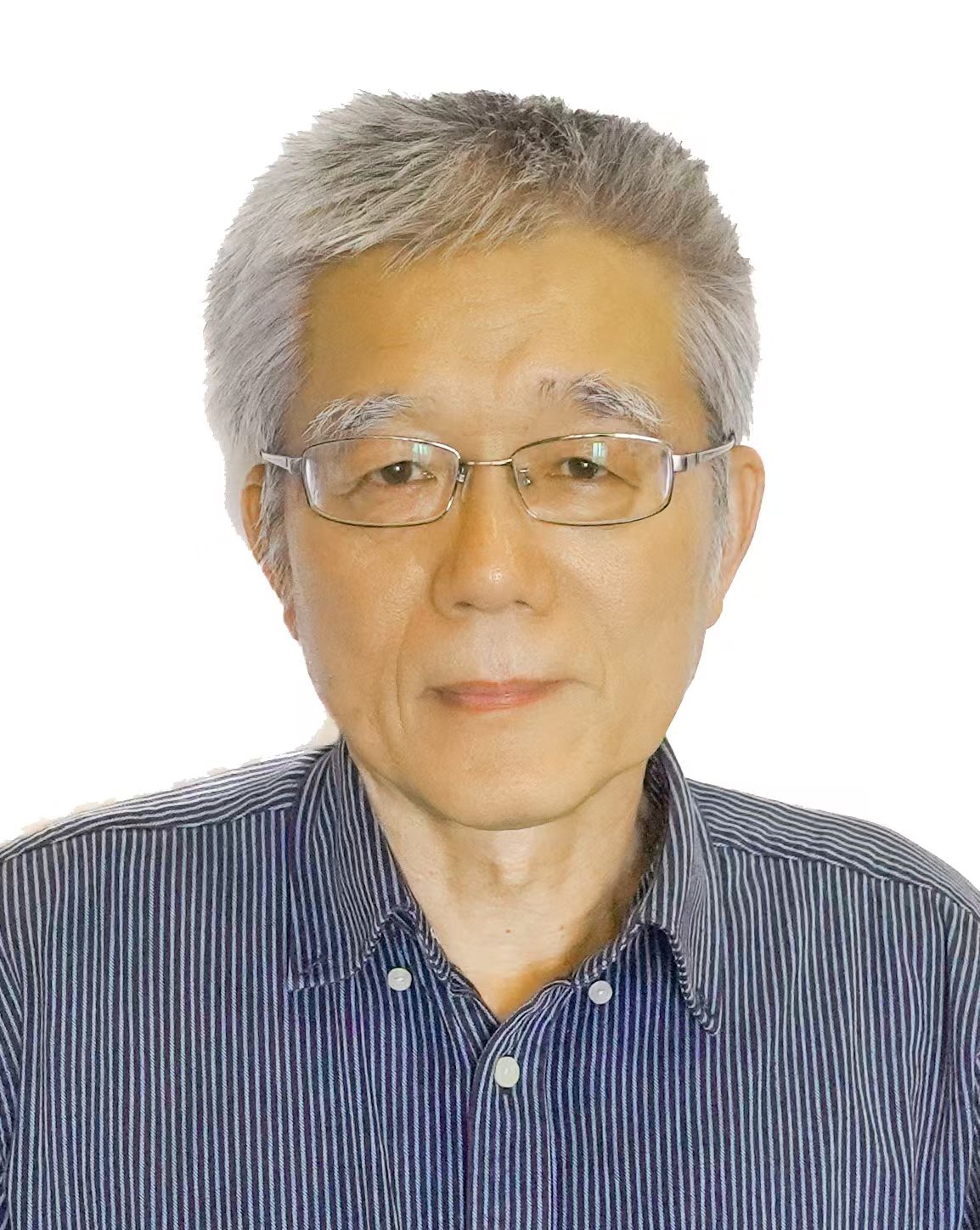PI介绍

个人简介
杨小杭,浙江大学教授,博士生导师。1982年杭州大学生物系本科毕业后,进入中科院上海植物生理所。稍后考入CUSBEA项目,1983年就读于美国Dartmouth大学医学院生化系,于1988年获得生物化学博士,同年到麻省理工学院生物系做博士后。1989年底去新加坡分子细胞研究所工作,历任博士后(William Chia’s Lab),研究员(Principal Investigator) 和高级研究员(Senior Principal Investigator)。1991-1993年,在新加坡荣获李光耀博士后奖(Lee Kuan Yew Postdoctoral Fellowship);2001年,获得新加坡国家科学奖 (备注:该奖项是新加坡科研最高荣誉奖,与William Chia共享)。2010年9月,全职回浙江大学工作。
杨小杭博士多年从事干细胞不对称分裂及果蝇神经发育生物学研究,早期专注于神经细胞命运决定的调控机制研究,率先报道果蝇胚胎中枢神经系统内特异表达的两个色胺酸去磷酸化酶;POU蛋白和Klumpfus蛋白对调控神经母细胞(Ganglion Mother Cell)特异性命运的作用;Staufen蛋白在神经干细胞不对称分裂中的功能;首次报道如Snail家族转录因子以及Pins和Gai在干细胞不对称分裂中的作用机理,神经干细胞分裂过程中纺锤体不对称性的调控,以及神经干细胞分裂末期矫正现象的分子机理等。回浙大后,研究工作聚焦在基因变异导致的遗传疾病,利用模式动物果蝇解析相关疾病的致病原理和机制。这些工作发表在Cell、Genes & Dev、EMBO J、Development等杂志上。
主要科研项目
1、 国家自然科学基金,31371381,“线粒体内膜基因chch1 与Hippo 信号通路控制果蝇器官大小的分子机理研究”,2014/01-2017/12, 已结题,主持。
2、 国家重大科学研究计划,2013CB945600,“神经前体细胞命运决定、分化及环路形成的调控机制”课题一,2013/01-2017/12,已结题,首席科学家。
3、 国家重大科学研究计划,2012CB966800,“干细胞分裂模式和干性维持机制研究”课题四,2012/01-2016/12,已结题,科研骨干。
代表性论文(#第一作者,*通讯作者)
1) The FAcilitates Chromatin Transcription complex regulates the ratio of glycolysis to oxidative phosphorylation in neural stem cells. Lou Y, Wu L, Cai W, Deng H, Sang R, Xie S, Xu X, Yuan X, Wu C, Xu M, Ge W, Xi Y, Yang X.J Mol Cell Biol. 2024 May 8:mjae017. doi: 10.1093/jmcb/mjae017.
2) Xie S, Xu C, Wu C, Lou Y, Duan J, Sang R, Lou Z, Hou J, Ge W, Xi Y, Yang X. Co-dependent regulation of p-BRAF and potassium channel KCNMA1 levels drives glioma progression. Cell Mol Life Sci.10; 80 (2023)doi: 10.1007/s00018-023-04708-9. PMID: 36763212;
3) Rong Sang, Cheng Wu, Shanshan Xie, Xiao Xu, Yuhan Lou, Wanzhong Ge, Yongmei Xi & Xiaohang Yang. Mxc, a Drosophila homolog of mental retardation-associated gene NPAT, maintains neural stem cell fate. Cell Biosci 12, 78 (2022). https://doi.org/10.1186/s13578-022-00820-8.
4) Huimei Zheng, Ziwei Lou, Xin Yuan, Haoyue Wu, Xiaohang Yang, Yongmei Xi. Phosphatase of Regenerating Liver-1 Regulates Wing Vein Formation through TGF-β Pathway in Drosophila melanogaster. Front Biosci (Landmark Ed). 2022 Jun 1;27(6):176. doi: 10.31083/j.fbl2706176. PMID: 35748252.
5) Wu, D,Wu, L, An, H, Bao, H, Guo, P, Zhang, B, Zheng, H, Zhang, F, Ge, W, Cai, Y, Xi, Y. and Yang, X. (2019) RanGAP-mediated nucleocytoplasmic transport of Prospero regulates neural stem cell lifespan in Drosophila larval central brain. Aging Cell,Feb;18(1):e12854
6) An, H., Ge,W., Xi, Y. and Yang, X.(2017)Inscuteable Maintains Type I Neuroblast Lineage Identity via Numb/Notch Signaling in the Drosophila Larval Brain JGG, 44, 151-162
7) Zhang, F., Huang, Z.X., Bao, H.C., Cong, F., Wang, H.S., Chai, P.C., Xi, Y., Ge, W., Somers W.G., Cai, Y. and Yang, X. (2016) Phosphotyrosyl phosphatase activator facilitates localization of Miranda through dephosphorylation in dividing neuroblasts. Development, 143(1) 35-44
8) Wang H, Cai Y, Chia W and Yang X. Drosophila homologs of mammalian TNF/TNFR-related molecules regulate segregation of Miranda/Prospero in neuroblasts. EMBO J 2006,25:5783–5793.
9) Yu F, Wang H, Qian H, Kaushik R, Bownes M, Yang X and Chia W. Locomotion defects, together with Pins, regulates heterotrimeric G-protein signaling during Drosophila neuroblast asymmetric divisions. Gen & Dev. 2005, 19: 1341-1353.
10) Cai Y, Yu F, Lin S, Chia W. and Yang X. Apical Complex Genes Control Mitotic Spindle Geometry and Relative Size of Daughter Cells in Drosophila Neuroblast and pI Asymmetric Divisions. Cell 2003, 112: 51-62.
11) Yu F, Cai Y, Kaushik R, Yang X and Chia W. Distinct roles of Gai and Ga13F subunits of the heterotrimeric G protein complex in the mediation of Drosophila neuroblast asymmetric divisions. J Cell Biol 2003, 162: 623-633
12) Yu F, Morin X, Kaushik R, Bahri S, Yang X and Chia W. A mouse homologue of Drosophila pins can asymmetrically localize and substitute for pins function in Drosophila neuroblasts. J Cell Sci 2003, 116: 887-896.
13) Yu F, Ong CT, Chia W and Yang X. Membrane targeting and asymmetric localisation of Drosophila Partner of Inscuteable are discrete steps controlled by distinct regions of the protein. MCB 2002, 22: 4230-4240.
14) Cai Y, Chia W and Yang X. A family of Snail related zinc-finger proteins regulates two distinct and parallel mechanisms which mediate Drosophila neuroblast asymmetric divisions EMBO J 2001, 20: 1704-1714.
15) Bahri SM, Chia W and Yang X. Characterization and mutant analysis of the Drosophila Sema 5C gene. Dev Dyn 2001, 221: 322-330.
16) Cheah PY, Chia W and Yang X. Jumeaux, a novel Drosophila winged-helix family protein, is required for generating asymmetric sibling neuronal cell fates. Development 2000, 127: 3325-3335.
17) Yu F, Morin X, Cai Y, Yang X and Chia W. Analysis of partner of inscuteable, a Novel Player of Drosophila Asymmetric Divisions, Reveals Two Distinct Steps in Inscuteable Apical Localization. Cell 2000, 100: 399-409.
18) Li P, Yang X, Wasser M, Cai Y. & Chia W. Inscuteable and Staufen are required for the asymmetric localisation and segregation of Prospero RNA during Drosophila neuroblast cell divisions. Cell 1997, 90: 437-447.
19) Yang X, Bahri S, Klein T. & Chia W. Klumpfus, a putative Drosophila Zn-finger transcription factor, acts to differentiate between the identities of two secondary progenitor cells from one neuroblast lineage. Gen & Dev 1997, 11: 1396-1408.
20) Yang X, Yeo S, Dick T and Chia W. The Role of a Drosophila POU Homeo Domain gene in the Specification of Neural Precursor Cell Indetity in the Developing Embryonic Central Nervous System. Gen & Dev 1993, 7: 504-516.
21) Yang X, Seow KT, Bahri SM, Oon SH and Chia W. Two Drosophila Receptor-like Tyrosine Phosphotase Genes Are Expressed in a Subset of Developing Axons and Pioneer Neurons in the Embryonic CNS. Cell 1991, 67: 661-673.



